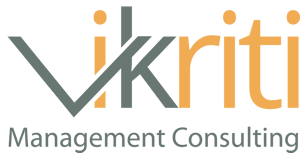Changing Expectations Amid the Great Resignation
Authored by Andrea Aho
Photo by Ernie Journeys on Unsplash
Across nearly every industry, workers are leaving places of employment at record rates. Some say “The Great Resignation”, as this exodus is commonly called, is simply the result of poor wages in the jobs being left. Others say it is the result of the perfect confluence of events (a global pandemic, racial justice issues, and political divisions, to name a few) and the heightened stress and confusion led to personal reflection and a desire to find a better workplace fit elsewhere.
As some of these tensions begin to fade, the extent to which business leaders will need to pivot to reinvigorate their workforce is still unfolding. And, it may become urgent due to another compounding factor. Emsi, a provider of labor market data, describes another separate but equally concerning phenomena in their report The Demographic Drought. They describe a coming “sansdemic” (sans-without, demic-people) which will greatly impact businesses’ ability to perform their work. The report illustrates that, due to declining birth rates in the U.S., there are simply not enough people to fill all jobs and it makes a compelling case that “the only real solution is to value people more. In a human-capital economy, people are the key ingredient. Every student, every employee, every potential employee is not only valuable, but is literally irreplaceable.”
In today’s market, there is no question companies are in steep competition for a scarce resource—employees. Leaders must not only attract new talent but work harder than ever to retain valued staff. While all companies and their leadership benefit from regular self-evaluation of their strengths and opportunities for growth, there has never been a more important time for organizational leaders to begin truly listening to employees at all levels. Developing a deeper understanding of employee perspectives and needs (which have changed drastically over the last two years), and pivoting accordingly, will enable businesses to adapt to this new landscape.
Most leaders of companies are acutely aware that appropriate compensation, good perks, and formal recognition matter to employees. But after such a shock to equilibrium, employees at all levels of organizations started taking a good look at their own personal values and priorities. It has become clear the status quo lifestyle for a working person is no longer good enough. While the landscape is continually evolving, the Society for Human Resource Management regularly shares emerging themes that are important to workers, as well as recommendations from management professionals on how to retain employees. For simplicity, we condensed these ideas into six broad categories for leaders to keep top of mind as they perform strategic analyses and revise their operational playbooks to meet their employees’ changing expectations.
Flexibility. Interest in remote work, or, hybrid work with the flexibility to choose when to be on-location in an office setting is a hot topic. If the work can be done anywhere with wi-fi, employees are also considering where they would like to call home. Some desire to leave big cities and opt for a less expensive location, others want to move closer to family or support networks, and still others hope for an adventurous lifestyle with no long-term home base. Employees that do not have the option to work remotely are looking for flexibility in scheduling and new technology that gives them agency to easily trade shifts with co-workers and control their own schedule.
Balance. Wellbeing programs have long been a standard benefit in the workplace, but employee expectations are going beyond an app. Living through a stressful period reminded us as a society that mental health matters. Employees are drawn to a workplace culture that promotes well-being and leaders that demonstrate positive mental health by setting boundaries, talking openly about their own well-being, and supporting their employees’ responsibilities outside of work such as caregiving or personal hobbies.
Inclusivity. Everyone deserves to feel physically and psychologically safe in their work environment and large social justice movements are insisting on progress from employers. Employees from traditionally underserved communities, races, gender identities, ages, abilities, and more need to see themselves as valued members of the workplace and diversity should be reflected at all levels of an organization, not just used as a buzzword. Employees are drawn to a workplace where their peers can offer new insights from lived experiences and vast knowledge that will enable their team to perform at a higher level than their competition.
Community. People naturally want to be “in community” with one another and after a period of social isolation, loneliness and disconnection are natural consequences. Many employees want meaningful interactions with colleagues, to feel recognized for their contributions, to feel a sense of belonging to their team, and to participate in programs that help them feel more connected to the organization.
Purpose. The consistently increasing push for transparency in business and corporate social responsibility is reflective of changing attitudes towards work. Workers want to know they are contributing to a cause beyond profits and to feel good about their work. They also want to understand how their role aligns with their own personal values and belief system.
Growth. The desire for learning and development is ubiquitous, though it may take different forms for different people. Some employees are interested in clear promotional pathways and opportunities for advancement within their jobs, while others are interested in variety of experiences or the opportunity to gain a new skillset.
In an unprecedented way, the pandemic and has required us to re-think how we do business. The status quo is no longer working and businesses that only play lip-service to important issues employees raise are being left behind. Prioritizing the needs of employees by truly listening and developing a plan that centers people can create a positive workplace culture in which employees will thrive and want to stick around.
___
VIKRITI helps companies create, revise or review their talent management strategy and implement learning paths and coaching that make an impact on employee retention and attraction of new talent.

